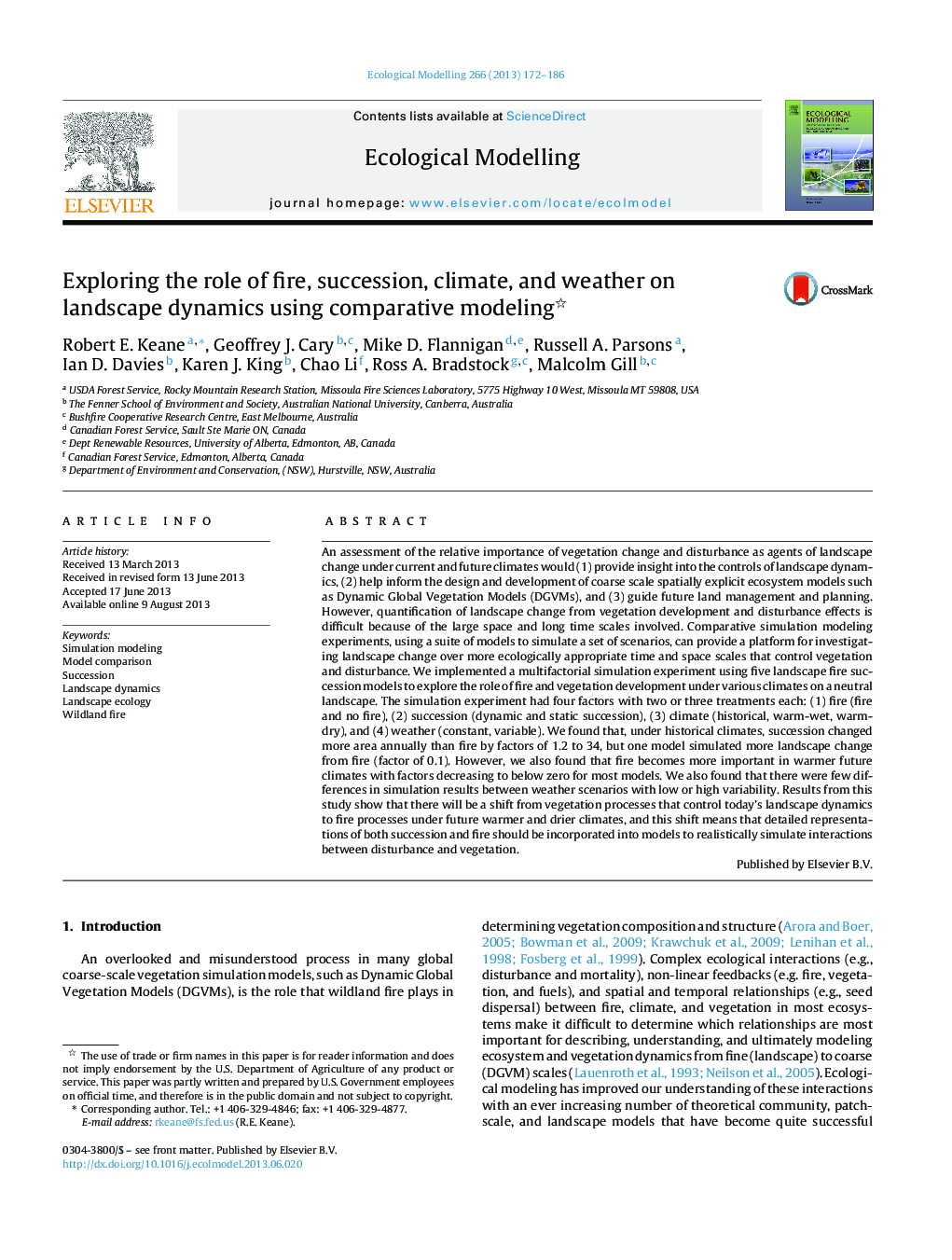| Article ID | Journal | Published Year | Pages | File Type |
|---|---|---|---|---|
| 6297136 | Ecological Modelling | 2013 | 15 Pages |
â¢Five landscape models explored the role of fire and vegetation under changing climates.â¢Succession was an important driver of landscape dynamics under historical climates.â¢Wildland fire became important as climates became warmer and drier.â¢Interactions between fire, vegetation, and climate must be simulated.
An assessment of the relative importance of vegetation change and disturbance as agents of landscape change under current and future climates would (1) provide insight into the controls of landscape dynamics, (2) help inform the design and development of coarse scale spatially explicit ecosystem models such as Dynamic Global Vegetation Models (DGVMs), and (3) guide future land management and planning. However, quantification of landscape change from vegetation development and disturbance effects is difficult because of the large space and long time scales involved. Comparative simulation modeling experiments, using a suite of models to simulate a set of scenarios, can provide a platform for investigating landscape change over more ecologically appropriate time and space scales that control vegetation and disturbance. We implemented a multifactorial simulation experiment using five landscape fire succession models to explore the role of fire and vegetation development under various climates on a neutral landscape. The simulation experiment had four factors with two or three treatments each: (1) fire (fire and no fire), (2) succession (dynamic and static succession), (3) climate (historical, warm-wet, warm-dry), and (4) weather (constant, variable). We found that, under historical climates, succession changed more area annually than fire by factors of 1.2 to 34, but one model simulated more landscape change from fire (factor of 0.1). However, we also found that fire becomes more important in warmer future climates with factors decreasing to below zero for most models. We also found that there were few differences in simulation results between weather scenarios with low or high variability. Results from this study show that there will be a shift from vegetation processes that control today's landscape dynamics to fire processes under future warmer and drier climates, and this shift means that detailed representations of both succession and fire should be incorporated into models to realistically simulate interactions between disturbance and vegetation.
